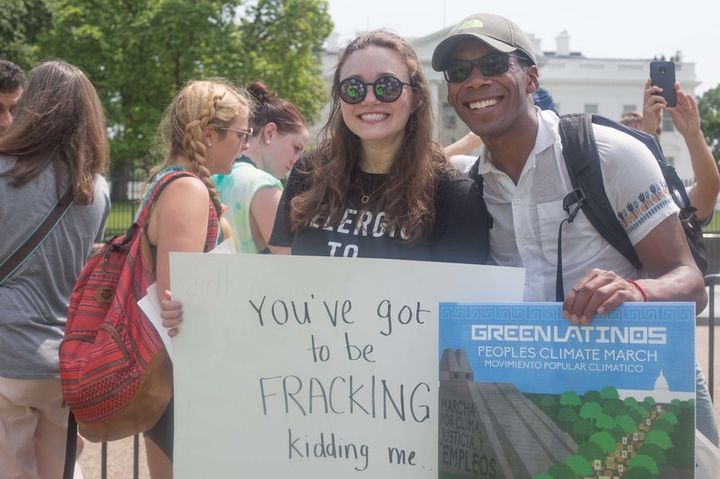How protests send more powerful messages to ourselves rather than our oppressor
Alex Woodard wrote in his poignant memoir, For the Sender, that “a song is like a letter, and a letter is like a prayer. It’s more for the sender.” These words hung over me as I participated in my first environmental protest, the People’s Climate March, in Washington, DC this past April 29, and soon I began to connect the dots and expanding upon Alex’s idea.
What if…protests are really for the protester?
Letters are meant to send a message of relevance to someone else, but in the process, I, like many individuals, find that letter-writing can become a reflective, self-educating process alone. A thank you note to a relative becomes a reminder of the love that’s present in my life. A post-card to an old friend brings laughter to my heart as I recall a past experience with that person. As Alex would describe my letter-writing, “It’s more for the sender.”
Similarly, protests are meant to also send a message that a group of people – whether large or small – care about a particular issue, and honestly, this was my intent as I made arrangements to attend the People’s Climate March. “I am doing this, so that our message will be heard,” I would tell people. But, really, I became present to something else that was happening inside of me.

Charles and friend, Selena, at the People’s Climate March 2017 in Washington, DC.
Through the process of making signs with fellow changemakers before the march, networking with organizations I had just learned about such as the Americas for Conservation + Arts, singing and dancing with activists such as the Green Latinos and Mister G, and chanting with an organic, authentic community, I felt connected to something so much greater than myself. This was the life-affirming energy that I needed, especially, given that nearly three-quarters of Americans (and many leaders in our current Administration) don’t trust that there is a large “scientific consensus” among climate scientists on human behavior being the cause of climate change, it’s not surprising that it is possible to feel lonely in the environmental space.
This mindset shift from “I am doing this to resist Donald Trump” to “I am doing this to support my own well-being” is a much more life-affirming stand point. Instead of anger and disgust, I felt awakened and energized. In fact, I had more space to engage myself as an activist. This is meaningful self-care, an increasingly important and relevant topic for many activists today.
So, how do we prolong the life-affirming messages that protesting sends us?
- Stay connected with your protest community. Continue the relationships beyond the business card exchange. Support one another.
- Join another protest. Stay plugged into local organizations and their happenings in your backyard.
- Organize a microdemonstration. You don’t need 400,000 people like the People’s Climate March; you just need yourself.
Follow Charles on Twitter @Corgbon.
